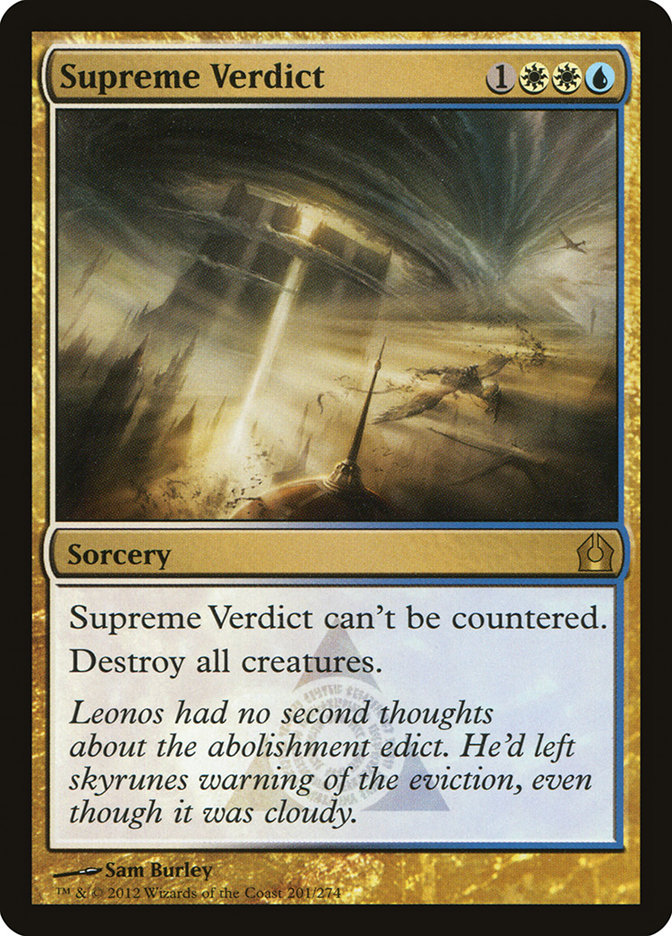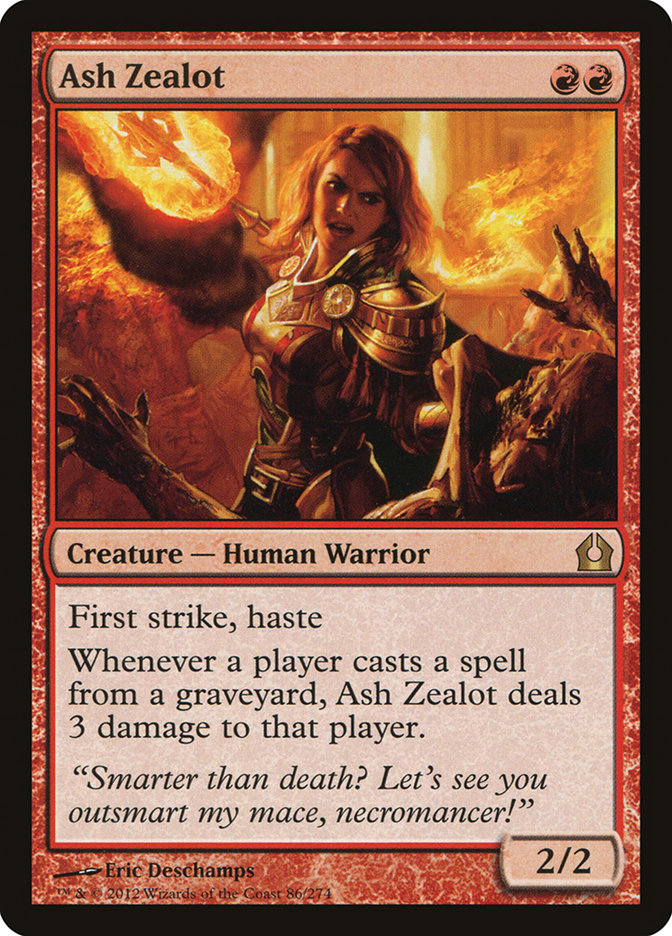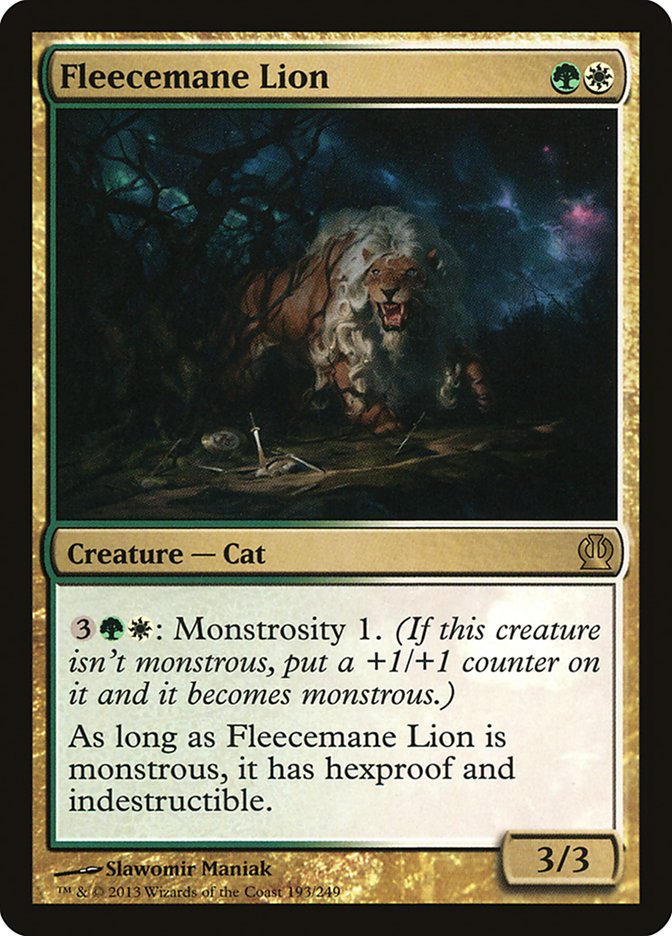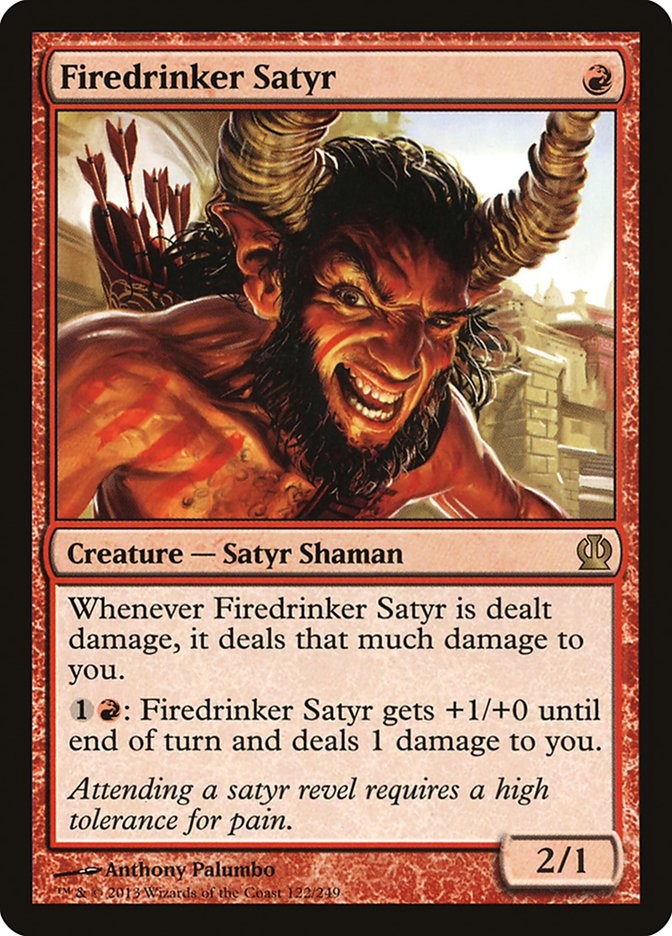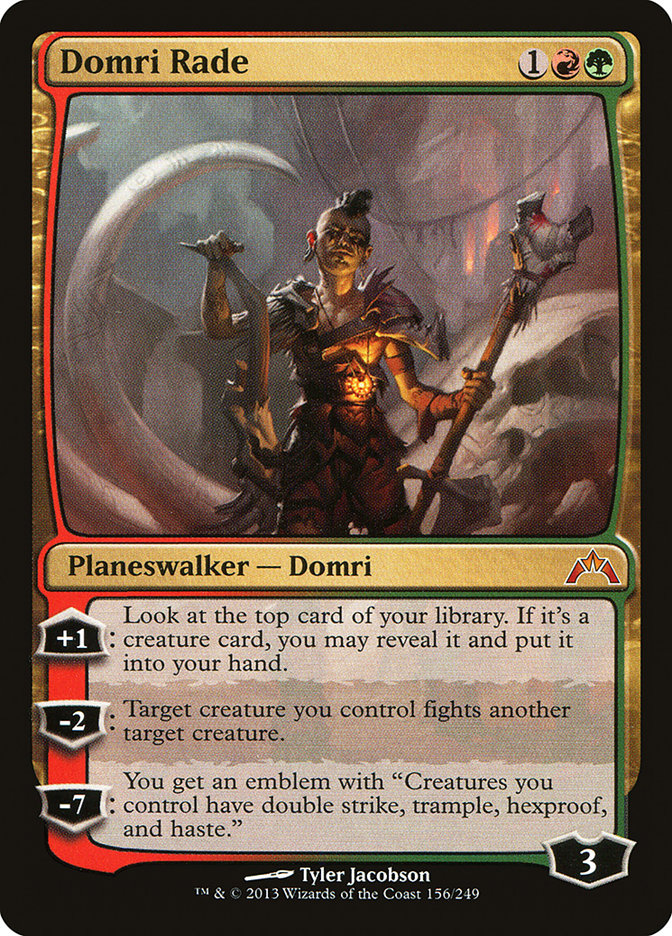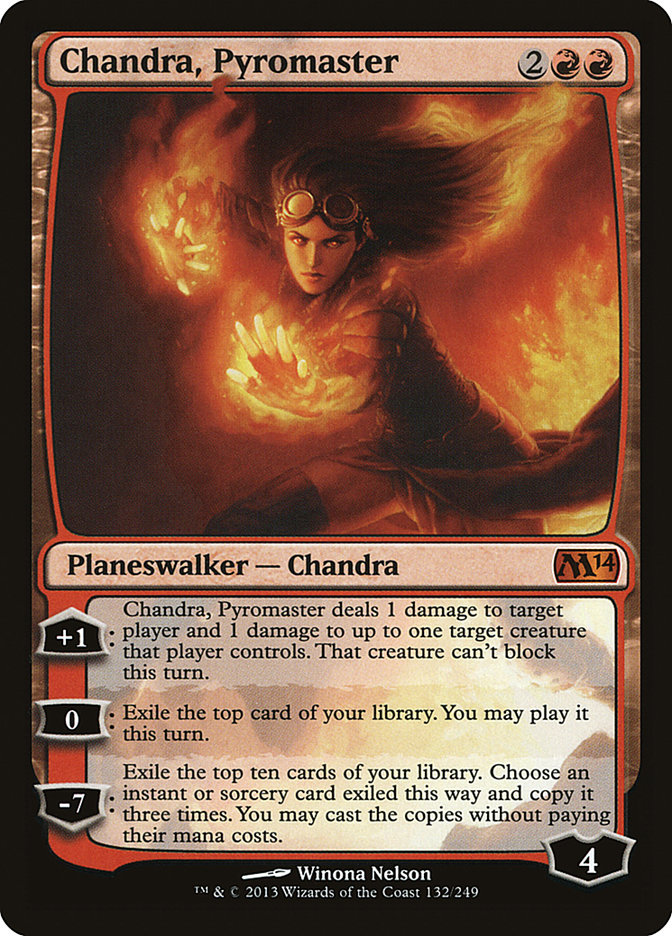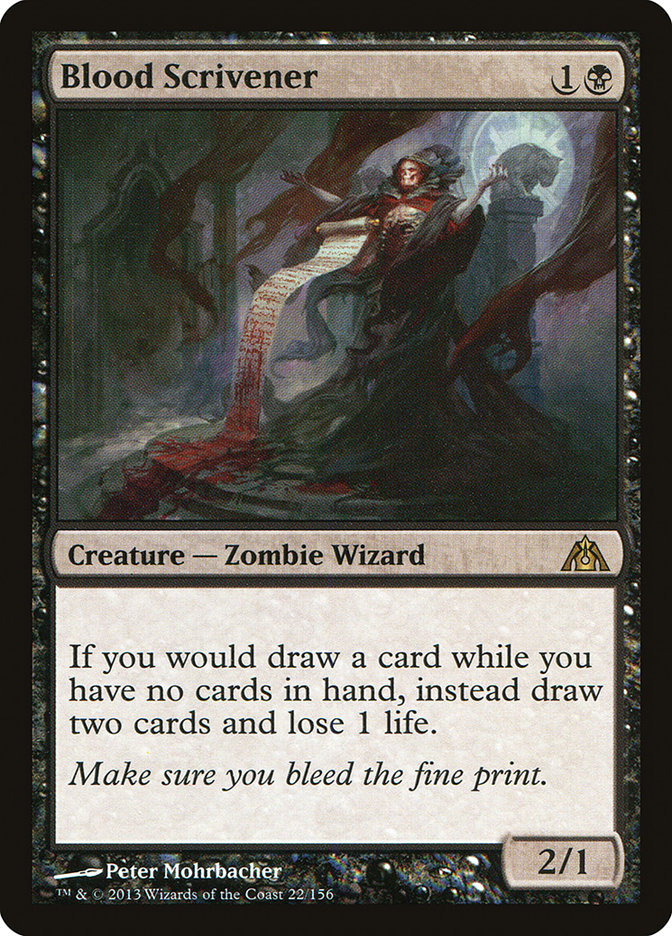One of the sobering things about doing testing in new formats is to see something you’ve been working on get torn apart. For example, here is the deck that I was working on before the weekend’s drafting extravaganza:
Creatures (11)
Planeswalkers (4)
Lands (24)
Spells (21)
Sideboard

In my first matches, this deck actually did fairly well. But for this most part, this was more of a matter of most of the decks I was playing against being the kind of matches to which this deck is suited: the midrange slog-a-thon. Sure, play your few threats. Sure, have your few answers. I’m just going to overpower you. Or at least that was the theory, and it played out quite well when I slung down against another deck doing its best impression of The Rock or Jund or Junk or what have you.
There are a lot of good things going on in this list. The threats are powerful and real. The answers are versatile and strong. Whether you are going more aggressive or more controlling, the deck is capable of playing that game. Depending on what you think you’ll need to sideboard, black and white give a lot of good options. In my own case, I’m pretty pleased with roughly how I have my sideboard arrayed.
Then, of course, I get hit by the current squeeze of the metagame in the form of two opposite extremes.
The New Standard Squeeze
So far in my testing, Standard can mostly be broken down into the following three cards:
Now, this is not to say that other decks don’t exist, but for the most part, you have decks that are fitting into U/x Control (which is usually U/W Control), R/x Aggro (which is usually Mono-Red), and W/G Aggro. There are also the various midrange decks, most of which are black-based but also include Naya and other versions. But realistically speaking, I think I’ve come to the conclusion that the midrange lists that are out there are in a real tight spot.
It’s not about the W/G Aggro lists, which a midrange list can fight in a fairly fair way. It’s about the squeeze put on by the competing pressures of the first two deck archetypes. Now, I have Supreme Verdict and Ash Zealot there representing U/W Control and Mono-Red Aggro, but those cards are there largely because I see those as the current four-ofs that you can count on from those archetypes. The real squeeze is from cards that aren’t necessarily played by everyone in great numbers and yet are very reasonable to see as a four-of from these decks:
What it all boils down to is that with the current cards available to my B/W deck above, you can’t reasonably expect to fight against both of those cards.
The U/W fight is something that you could mostly equip yourself to fight. You can start with the Thoughtseizes, have access to Duress, and then just have enough threats. What you can’t do, though, is recover from a single Sphinx’s Revelation unless you already have them so far on the ropes that it didn’t matter that they cast it.
In the red-based versions, you could have access to some more powerful weapons, including Rakdos’s Return, but even there you are playing second fiddle to Sphinx’s Revelations, which can buy the opponent enough time to push back through each of your threats and just push you out of the running even if you have great weapons.
In a slightly different vein, the Mono-Red Aggro fight is hopeless in a different way; ultimately, you are just to slow to get into it! Even after sideboarding in a package of one Blind Obedience and four Pharika’s Cures, you just get into the fight too late to be able to have your most powerful weapons come to the table. For example, imagine you’ve sideboarded out the most obvious cards (four Thoughtseizes and one Liliana of the Dark Realms) and see what your curve still looks like:
1CC: 0
2CC: 13
3CC: 7
4CC: 9
5CC: 7
Sure, there are a lot of answers in there. Sure, there is a lot of life gain. But what you don’t have—even with Pharika’s Cure—is time. The red deck, particularly if they are running something like Owen Turtenwald did at the StarCityGames.com Standard Open in Worchester, is just ready to overwhelm in such a way that it really feels quite hopeless. The deck really aches for a Mutilate, a Barter in Blood, or an Infest, and it simply doesn’t have it.
If you’re wondering what kind of decks I’m talking about, let’s look at two versions run by SCG’s own Brad Nelson and Gerry Thompson:
Creatures (24)
- 4 Chandra's Phoenix
- 4 Ash Zealot
- 4 Rakdos Cackler
- 4 Firefist Striker
- 4 Young Pyromancer
- 4 Firedrinker Satyr
Planeswalkers (2)
Lands (22)
Spells (12)
Sideboard

Creatures (5)
Planeswalkers (6)
Lands (26)
Spells (23)
- 2 Syncopate
- 4 Divination
- 2 Ratchet Bomb
- 4 Azorius Charm
- 4 Supreme Verdict
- 3 Detention Sphere
- 2 Sphinx's Revelation
- 2 Dissolve
Sideboard

Now, I don’t particularly like either version of these two lists, but that isn’t the point. The point is that I wouldn’t want to be playing a midrange list against either of them. If you just watch how their games go down, you can see the ways that each deck really plays to the extremes, and that is without GerryT even completely going full control.
The major issue is this—if you have answers fast enough to respond to Mono-Red Aggro, you are probably not fast enough to make the U/W Control deck have to worry, and you fall right into the trap of their Sphinx’s Revelations even if they only run two or three. It’s just a terrible squeeze.
Breaking Free of the Trap
What is a poor midrange player to do?
I think there is really only one way to escape—find cards that can provide card advantage and manage to be a potential threat. The easiest of these to think of are planeswalkers.
What you really need to be doing if you want to put any fear into a controlling deck is you need to be putting something down that demands a Detention Sphere . . . or else! Yes, Esper also gets access to Hero’s Downfall, but the point is that you need to put something truly threatening on the table that they can’t just remove easily. Your card needs to be hard to handle and not be something that can be ignored. Some creatures can fit the bill, but they have to work harder for that. Domri and Chandra almost seem perfect.
We’ve seen these cards together before in, say, Naya. One real problem, though, is that the mana for a Naya deck that wants to do this is frankly quite terrible. So many of your lands are going to come into play tapped or cause damage that if you want the Access you need to mana, it is going to cost you too much Pain (check out my article from last week for more on this). It’s not too surprising then to see Christopher Posporelis’ deck from Worchester finish so well (third), defeating its slower cousin, a Naya build with a similar concept. Here is Posporelis’ G/R Monsters, a midrange deck with an aggro bent:
Creatures (22)
- 3 Scavenging Ooze
- 2 Ghor-Clan Rampager
- 4 Elvish Mystic
- 3 Polukranos, World Eater
- 2 Ember Swallower
- 4 Sylvan Caryatid
- 4 Stormbreath Dragon
Planeswalkers (7)
Lands (24)
Spells (7)

If we break down the active parts of this deck’s curve, it looks pretty solid:
1CC: 4
2CC: 7 (+7-9 reactive cards)
3CC: 4
4CC: 10
5CC: 4
The deck still looks like it is a bit slow to a Mono-Red Aggro deck, so perhaps it is no surprise that it was crushed 2-0 by the eventual champion, Philip Bertorelli, with the red deck. But let’s imagine what we could do to perhaps improve that matchup while still maintaining a reasonable stance against a blue-based controlling deck.
Creatures (23)
- 4 Scavenging Ooze
- 4 Elvish Mystic
- 2 Polukranos, World Eater
- 2 Polis Crusher
- 3 Sylvan Caryatid
- 4 Stormbreath Dragon
- 4 Voyaging Satyr
Planeswalkers (6)
Lands (24)
Spells (7)

The changes I’ve made to this deck are actually fairly small. First, I’ve added more mana sources to the deck by introducing Voyaging Satyr to it. I did shave into the Sylvan Caryatids to do so, but while Sylvan Caryatid could be an excellent defensive card against much of an aggro deck, it doesn’t match up that well against Firedrinker Satyr. Still, I’ve continued to include it, and in combination with neo Llanowar Elves Elvish Mystic, there are now eleven mana accelerators.
In addition, I’ve added another Lightning Strike to the deck, swapping its number with the number of Mizzium Mortars. Now, I love Mizzium Mortars, but one of the things that kept happening to me again and again in testing one of my red midrange aggro decks against U/x control decks is I kept choking on Mortars after Mortars when all I really needed was one spell to end it of nearly any variety. It might actually be even better to cut down to only two Mortars, though if you did that I’m not sure what removal spell you’d want to throw in there to replace it.
Overall, the curve was dropped and the answers were given a slight touch more versatility (for example, the extra Lightning Strike over the Mortars). One of the cards I’m particularly pleased with right now is Polis Crusher, which does a number on Detention Sphere and Chained to the Rocks.
One of the sideboard cards I’m actually quite happy with is Fog, which often ends up being six-to-ten life from a one-mana instant. The more romantic out there could replace it with a wild choice like Predator’s Rapport, and that might be quite fine. I generally hate cards like Predator’s Rapport since they require that you have out a substantial creature for them to matter, but it can certainly recover a game quite nicely from the brink.
Applying the same ideas to another deck that I’m fond of, Big Boros, I think could also help it out. Generally, we’re looking for a combination of lowering the curve and increasing threats, however small.
Here is Brian Swatkins’ version:
Creatures (15)
Planeswalkers (4)
Lands (26)
Spells (15)

I mostly quite like the look of this deck and only think that I’d change it slightly, shifting a few of the numbers around only barely.
Creatures (15)
Planeswalkers (3)
Lands (25)
Spells (17)

The changes between the maindecks of the two are pretty minor:
+1 Frostburn Weird, +3 Lightning Strike, +1 Warleader’s Helix
-1 Stormbreath Dragon; -1 Chandra, Pyromaster; -2 Mizzium Mortars; -1 Boros Guildgate
I love Mizzium Mortars right now, but honestly running more than a few dedicated creature removal spells when you are already packing burn strikes me as the wrong call at the moment. Against a controlling deck, a card like Magma Jet has some use, but it is often too weak a card to have much of an impact. Given enough of those kinds of cards, you can potentially finish a game out, but it is a dead-end path you walk down, with the cards only really having a use if you can get them close enough for the cards to matter. To add on to that five more cards that are practically dead feels like more than too much.
Contrast this with a black-based removal package, which reasonably might want seven or eight copies of Hero’s Downfall and Doom Blade together. Here, without a burn package, the deck really does need that extra dedicated removal in order to handle an aggressive deck, but it isn’t hurt so much against the controlling decks (even though it is hurt) because all told it isn’t packing the largely weak burn cards. Hero’s Downfall has added benefit of taking out planeswalkers, but, even so you’re still going to be at somewhat of a disadvantage packing that many removal spells, even if a few of them could target something like Jace.
What about applying these very ideas back to the B/W deck that I began the article with?
Well, let’s see what we get:
Creatures (15)
Planeswalkers (3)
Lands (25)
Spells (17)

Here, I’ve cut the curve way down and also reduced my card counts on those cards that sometimes just ended up being a major liability.
Take Whip of Erebos for example. This card is actually completely awesome in the previous deck. But in the games where I drew the second one, it felt pretty terrible. Even though the Whip can have a real effect on the way that the game can play out, even against an opponent where it is likely to be particularly relevant (like Naya), there is still enough interplay between the decks that the cost isn’t worth it.
Once you cut a Whip, it becomes pretty easy to cut down to two Obzedats, both to lower the curve and also to reduce the chances of legendary problems coming into play. The Whip of Erebos / Obzedat, Ghost Council trick is an amazing late-game gambit to drop on an opponent in a slow grind, but really you need to live to get there.
There were shaves of all kinds, big and small, to influence the curve of the deck. Let’s compare it from the first deck to the final:

It’s a pretty minor shift in some ways, merely shifting the curve down away from the land of four and five mana and into the world of two and three. One of the biggest adds is this card:
I had a couple other cards in mind for this slot—Vizkopa Guildmage, Rakdos Shred-Freak, and Tithe Collector—but I ended up going with Blood Scrivener for a pretty simple reason—it can trigger versus a control deck and is very unlikely to try versus an aggressive deck. In essence, as a 2/1, it can just try to hop in the way of a Satyr or a Cackler or a Mutavault. On the other hand, against a more controlling deck, it can attempt to start putting on pressure, but in a late game it might actually start to provide a few cards that you can desperately need to get going.
I’m running Sin Collector for similar reasons. While much better against a controlling deck than against a red aggro strategy of course, it isn’t unreasonable to catch a burn spell that was waiting for a better time to be used since a creature seemed like a better plan for them. In some ways, you could say that that is just asking to be lucky, but I think you actually need some luck to go your way for the matchup to work out.
By lowering the curve against the aggressive decks, you might actually live long enough to get your big monsters into the fight. This isn’t just true for my B/W Midrange deck but is basically true for any of the other midrange decks you might consider as well. At the same time, you need to make sure that you keep your threat count high enough so that you can hope to not be overwhelmed by control. This is a bit of a harder question to answer in some ways, and it will usually take utility creatures and planeswalkers to pull off. Ultimately, though, this is the kind of thing you need to be doing if you want to make midrange work.
What kind of midrange lists are you working on and how are they faring against the squeeze between Firedrinker Satyr and Sphinx’s Revelation? Let me know about it in the forums and let’s talk about it.
Until next time,

